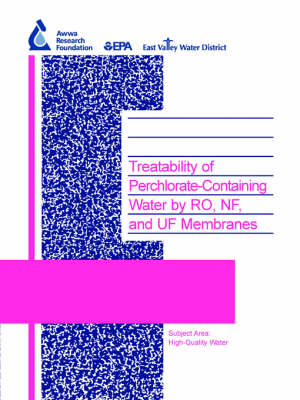The California Department of Health Services has established a provisional action level of 4 ug/L for perchlorate in drinking water due to its toxicity. There are 14 states in the United States that have thus far confirmed perchlorate in ground or surface waters. Ongoing research is investigating other treatment technologies for perchlorate rejection, including biological degradation, ion exchange, and activated carbon. The major objectives of this project were to: determine the removal/rejection of perchlorate (ClO4-) ion by high pressure membranes, including reverse osmosis (RO), nanofiltration (NF), and tight ultrafiltration (UF); evaluate the effects of water quality parameters, pH, ionic strength (conductivity), and co-ions and counter-ions, on process performance; and study membrane operating conditions (e.g., recovery) on perchlorate rejection and potential scaling. Water quality is a determining factor in applying high pressure membranes to perchlorate rejection. Effective rejection of perchlorate by RO, NF, and tight UF has been demonstrated according to two rejection mechanisms: steric (size) versus electrostatic (charge) exclusion. Based on its size (hydrodynamic radius), perchlorate is selectively rejected over chloride through size exclusion; however, based on charge exclusion, sulfate is selectively rejected over perchlorate. Originally published by AwwaRF for its subscribers in 2003. This publication can also be purchased and downloaded via Pay Per View on Water Intelligence Online
- ISBN10 1843398621
- ISBN13 9781843398622
- Publish Date 1 January 2004
- Publish Status Active
- Publish Country GB
- Imprint IWA Publishing
- Format Paperback
- Pages 244
- Language English
